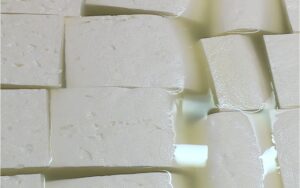
Weaker milk production in the Northern Hemisphere is keeping dairy prices high.
Following last week’s Global Dairy Trade (GDT) results, milk powders are now sitting at their highest prices since late 2022.
NZX dairy analyst Rosalind Crickett noted that bullish sentiment showed up in last week’s GDT with all product prices heading north, except lactose.
Crickett says despite milk production booming in the Southern Hemisphere for Australia and New Zealand, the Northern Hemisphere has seen flat to bearish production.
“China has also recently printed consecutive year-on-year milk production declines through August (-4%) and September (-1.9%), and consecutive declines in the monthly ending stocks of dairy inventory, which could well be the driver behind this increased demand for milk powders we’ve seen of late.”
Milk fats were the star of the show, butter skyrocketing 8.3% overnight, while anhydrous milk fat (AMF) jumped 4.6%, setting a new price record on the GDT platform. Whole milk powder prices gained 4.4%, with an average winning price of US$3,713/MT. Skim milk powder prices gained 4% with an average winning price of US$2,850/MT.
Cheddar prices were up 4% with an average winning price of US$4,973/MT. Prices also rose for anhydrous milkfat (+4.6%), mozzarella (+0.9%), butter (+8.3%). Lactose prices declined again, down 6.1% to US$843/MT.
Read More
Crickett believes constrained milk supply in other regions is a key factor in the keen demand for milk fat products, with many regions such as the US and Europe producing less butterfat products in the year-to-date.
“Overall, there are man factors at play as we round out the final three trading events of 2024, with stockpiling for Christma and the Chinese Lunar New Year well underway.
“The US election was also making traders nervous about the implications either result will have on trade policy and commodity markets as a whole.
“While production is booming in New Zealand and the NZX milk production predictor anticipating a 3.6% YoY increase for October milksolids, concern regarding animal health in the US and EU, and weak domestic raw milk prices in China continues to be a driver of lowered production.”
ASB senior economist Chris Tennent-Brown believes there are upside risks to the season’s milk price and NZ dollar hedging is paying off for Fonterra.
“We estimate that the lion’s share of this season’s NZD hedging will be in place now, and by our estimates it should be close to, or a tad lower than last season’s US$0.6120 effective rate.
“The current NZD level is still helpful however for the remainder of this season’s hedging and into the following year. The risks surrounding our current $9.20 milk price forecast are building to the upside.”





